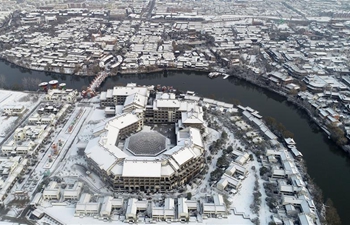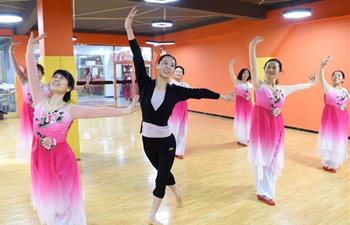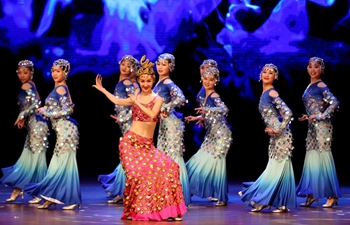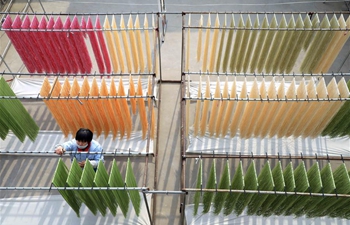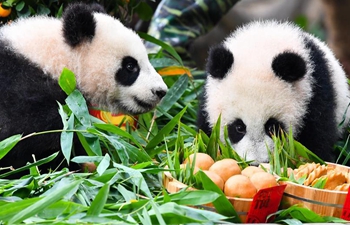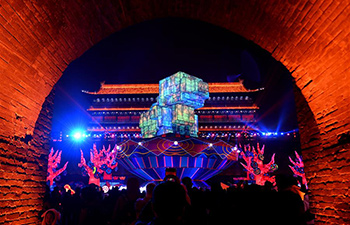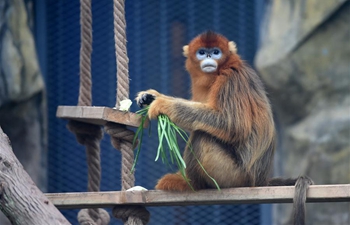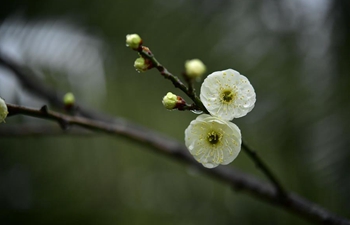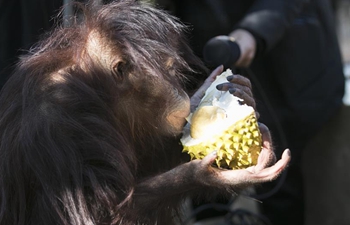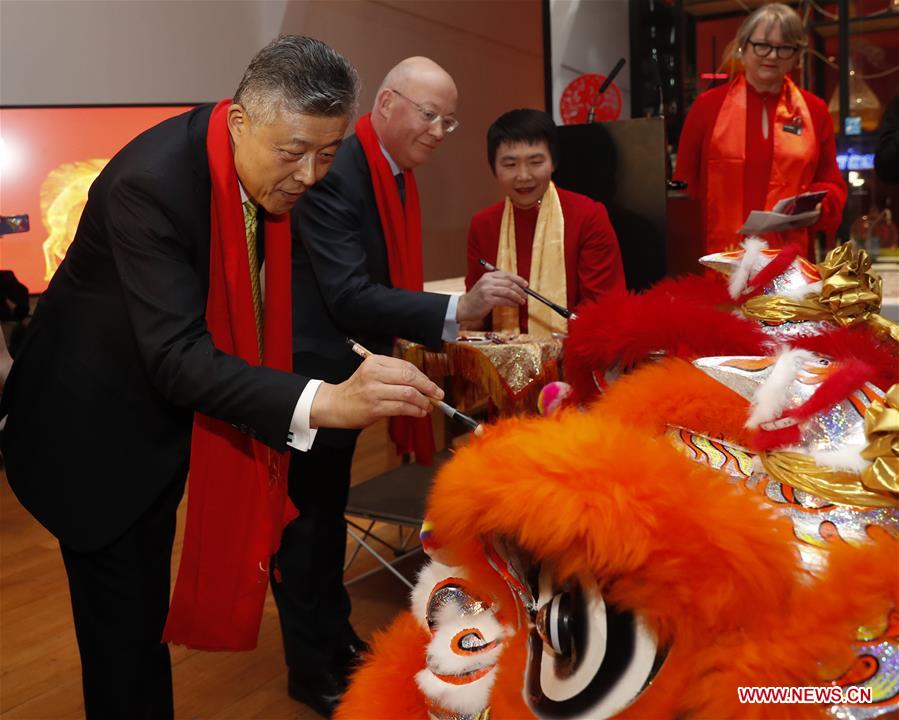
Chinese Ambassador to Britain Liu Xiaoming (1st, L) and Ian Blatchford (2nd L), director of the Science Museum Group, take part in celebrations of the Chinese Lunar New Year at the Science Museum in London, Britain on Jan. 30, 2019. With Chinese folk music, Kongfu performance, and lion and dragon dances, the Science Museum in London was brimming with pleasure Wednesday night. Around 5,000 visitors joined the China Lates programs in the museum to celebrate the Chinese Lunar New Year, which falls on Feb. 5. (Xinhua/Han Yan)
LONDON, Jan. 31 (Xinhua) --? Around 5,000 visitors joined the China Lates programs in the museum to celebrate the Chinese lunar New Year, which falls on Feb. 5.
They enjoyed the chance of not only discovering how Chinese people celebrate the biggest festival of the year, but also finding out more about the latest science and emerging technology in China.
The exhibitions showcased China's splendid achievements in science and technology in both ancient and modern times, including "An ancient Chinese scroll in AR", "China's space program" and "Flyers of Mesozoic China".
The Beijing Publishing Group has brought over its exclusive augmented reality (AR) viewing of Tiangongkaiwu, a 16th-century Chinese encyclopedia of scientific inventions.
Karl Bergquist, from the European Space Agency (ESA), presented the incredibly fast rise of the Chinese space program, talking about its ongoing projects and the relationship between the ESA and China.
Aleksandar Zivanovic, an engineer and a regular visitor of the museum, told Xinhua that he and his wife were most interested in the Chinese space program talk, especially finding out about the recent landing of China's Chang'e-4 probe on the far side of the moon.
"It is fascinating to come in and to find out about the Chinese new year and Chinese science. Particularly we went to the talk about China's space program," he said, "It's a nice way to celebrate the Chinese new year, and a good way to find out Chinese culture and what's going on about Chinese science."
UK-China cultural exchange was another theme of the night event. Bradford UNESCO City of film and the British Library came together to reveal China's long-standing affection for the works of the Bronte's and the growing relationship between British and Chinese films.
Professional storytellers took visitors on a magical journey with stories about the Chinese New Year and the legendary monster Nian (year).
When taking a break between activities, visitors went to the cafe to enjoy Chinese food like crispy prawns, chow mein (Chinese stir-fried noodles), baozi (a type of filled bun or bread-like dumpling), and spring rolls.
Ian Blatchford, director of the Science Museum Group, welcomed the event and forthcoming UK-China cultural cooperation.
He said, "This museum is devoted to celebrating the past, present and future achievements of great civilisations, especially in the fields of science and technology. And China is a vital part of that vision: its ancient culture, and remarkable achievements in recent decades."
"The museum tells the story of the American, Russian, European, Japanese and British space programs and we would love to start collecting Chinese technology too," he added.
He noted that in recent years, the Science Museum has been building important professional networks with ministries, educational organisations and individuals in China, including partnerships with the major science museums in Guangzhou, Shanghai, Wuhan and Hong Kong. As a result, the two sides will have some excellent projects for the year ahead, both here and in China.
Chinese Ambassador to Britain Liu Xiaoming attended the event and hailed the innovation-driven development of China.
According to tradition, he said, Chinese families always gather together to have a big "New Year Eve reunion dinner" and the Science Museum was offering the China Lates event as an innovative and delightful "reunion dinner", where people can enjoy three delicious "courses": the original and authentic science and technology of China, the luscious Chinese culture, and the China-UK friendship with an enduring fragrance.
"China had been a world leader in science and technology in ancient times. The achievements were remarkable in the fields of mathematics, astronomy, medicine and agronomy. These had been China's important contribution to the progress of human civilisation," he said.
China is pursuing innovation-driven development. In 2017, overall public and private R&D spending totaled 1.76 trillion RMB yuan (263 billion U.S. dollars), accounting for 2.13 percent of China's GDP. Of this, company spending accounted for 78 percent, according to Liu.

